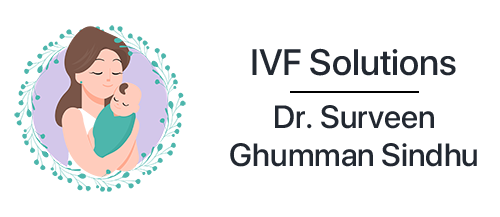Preimplantation Genetic Diagnosis/Screening
This treatment allows infertile couples who may have genetic diseases to conceive without passing the disease to the child.
Get Free Consultation
Explanation
Preimplantation Genetic Diagnosis
This technique is used in our centre for couples who may have a genetic disease like thalassemia, cystic fibrosis, X linked disorders etc enabling them to ensure that the disease is not passed on to the child. Hence for these couples conception should be through IVF after PGD is done. The embryo biopsy is done by taking out one cell from the embryo and sending it for genetic analysis. PGD avoids pregnancy termination as it allows selection of an embryo free of the genetic disease before pregnancy is established. PGD is available for almost any inherited condition for which the exact mutation is known.
Preimplantation Genetic Screening:
If a woman is undergoing repeated early pregnancy loss ( abortions) it could be due to genetic problems in egg or sperm (aneuploidy) This does not manifest in parents but occur in the baby specially in elderly women. PGS testing screens your embryos for any chromosomal abnormalities before transferring the embryo into your uterus
Did You Know?
Overall PGD is able to diagnose genetic defects with approximately 98% accuracy.
Treatment Protocol
ART Procedure
The first part is in-vitro fertilization (IVF) with intracytoplasmic sperm injection (ICSI) by which embryos are produced. Fertilized embryos are cultured to 5 days.
Day 5 Biopsy
Cells are taken from the outer trophectoderm layer without affecting the inner cell mass from which the fetus later develops. The retrieved embryonic cells are then sent for genetic analysis by the use of microchip method. Meanwhile embryos are frozen. They are transferred into the womb once the test results come and normal embryos can be selected
Why Surveen Ghumman Sindhu?
Our Success Story
We are writing this as a token of our gratitude and appreciation for Dr. Surveen Ghumman Sindhu’s efforts and guidance in helping us conceive our first child through IVF after 8 years of marriage and earlier failure.
We are writing this as a token of our gratitude and appreciation for Dr. Surveen Ghumman Sindhu’s efforts and guidance in helping us conceive our first child through IVF after 8 years of marriage and earlier failure.
It is with heartfelt happiness that we inform that she achieved it for us in our very first attempt.
Dr. Surveen has proved to be an ideal doctor and guide, being patient, warm and exuding positivity and hope.
SB & OR
Being blessed with a child is God’s Miracle. And after 8 years of marriage without any child I lost my hopes and ran out of options. But with God’s grace we met Dr Suveen and she gave us a ray of hope.
Being blessed with a child is God’s Miracle. And after 8 years of marriage without any child I lost my hopes and ran out of options. But with God’s grace we met Dr Suveen and she gave us a ray of hope.
Her hard work, experience, concern for patients, Dr Surveen, is a gift others can’t compare. Her patience, skilled hands, gentle touch and ability to see beyond is rare.
As I continue on with my fight in the journey of my life, I want to thank you for your contribution in making our future bright.
Mrs Preeti & Mr. Raman Chhabra
After years of trying I have conceived through IVF with Dr Surveen’s treatment. She was kind, sensitive helpful, and professional. Her encouragement and positivity made us feel we were in the right hands.
After years of trying I have conceived through IVF with Dr Surveen’s treatment. She was kind, sensitive helpful, and professional. Her encouragement and positivity made us feel we were in the right hands.
Her knowledge and experience made us reach our dream. Her directness and honesty instilled a confidence in us that if there was something to worry about she would let us know. She always available to answer all our questions and allay any fears. We are so grateful for all she has done.
Nilanjana & Ranadip
Some Priceless Happiness
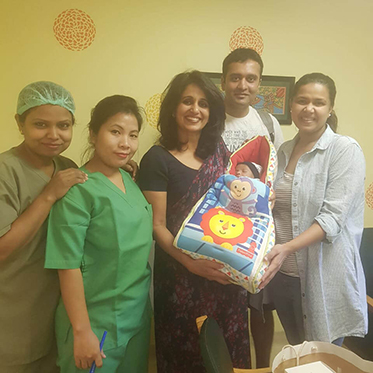
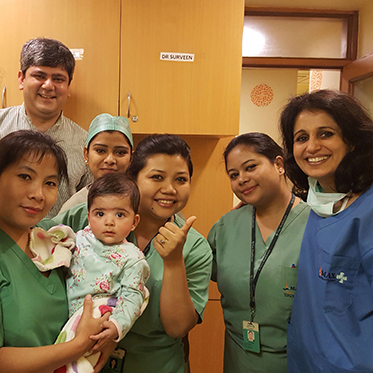
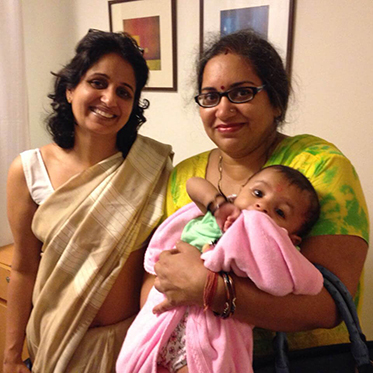
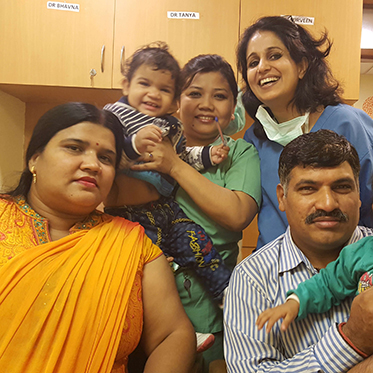
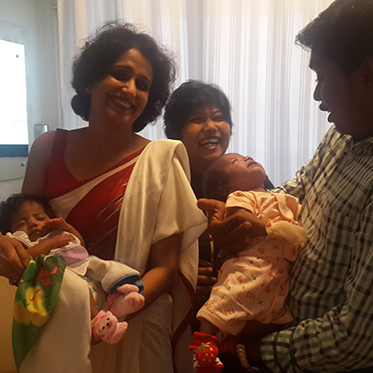
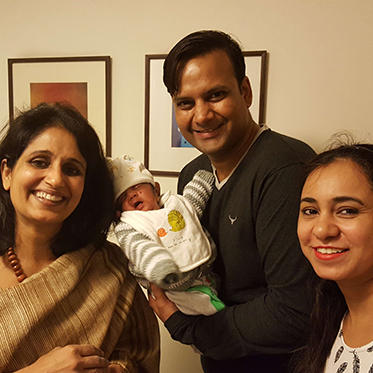
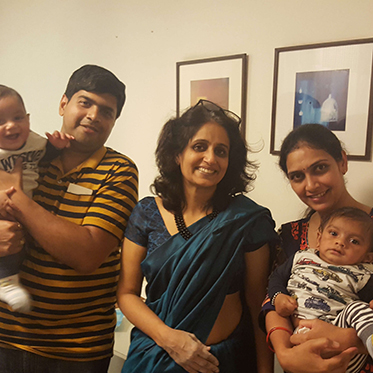
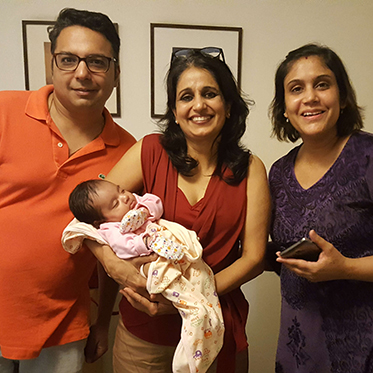
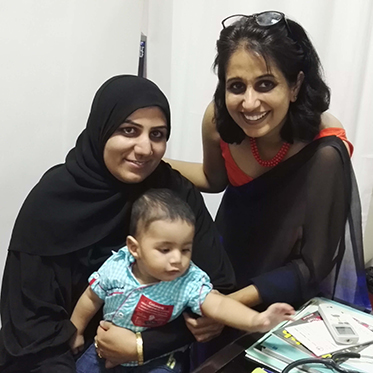
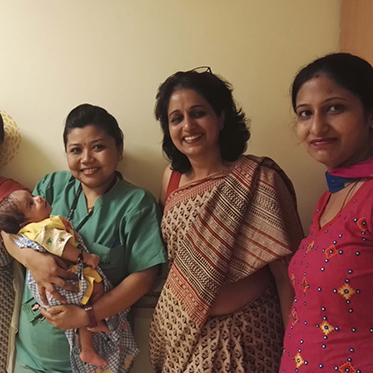

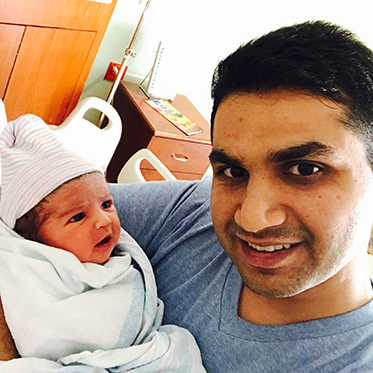

Frequently Asked Questions
An embryo biopsy is when one of our highly skilled embryologists removes a small number of cells from the outer layer of a five or six-day-old embryo. At this stage, the embryo is called a blastocyst, so you might have heard it referred to as a blastocyst biopsy instead.
The goal of both PGD and PGS is to increase the chance of selecting a healthy embryo that will develop into a healthy baby. These advances can make a real difference as birth defects occur in nearly one in 20 pregnancies, ranging in severity from minor anatomic abnormalities to extensive genetic disorders.
Older women are more likely to have eggs with the wrong number of chromosomes, so traditionally it’s been offered to women over 37. Abnormal chromosomes are thought to be the main reason why older women have difficulties conceiving and are more likely to have a miscarriage or a baby with Down’s Syndrome.
Preimplantation genetic diagnosis (PGD) is being used increasingly for infertility to dramatically improve the chance of a successful IVF pregnancy in couples where prior IVF failures have remained unexplained. It has been estimated that over half of all IVF failures are not able to be explained by an apparent problem with embryo “quality”. This discovery was brought about by the addition of preimplantation genetic diagnosis (PGD) to the tools available to scientists in the IVF laboratory. PGD has offered physicians and scientists, for the first time ever, the ability to examine far beyond the superficial appearance of an embryo.

